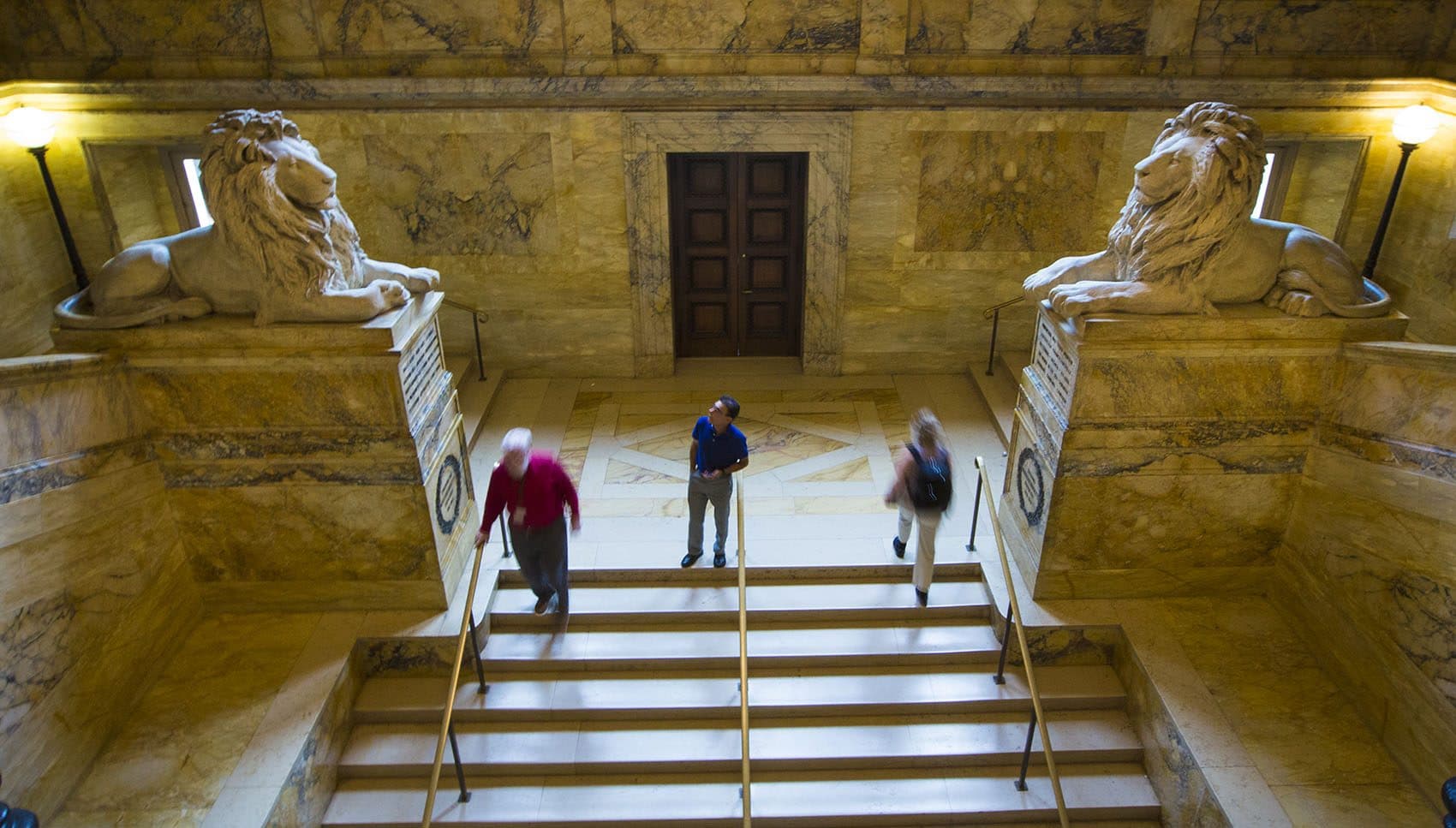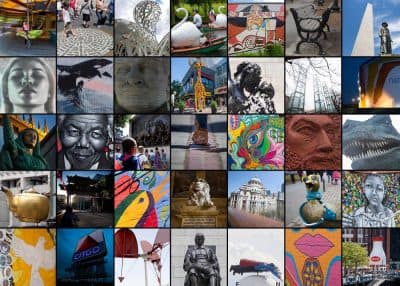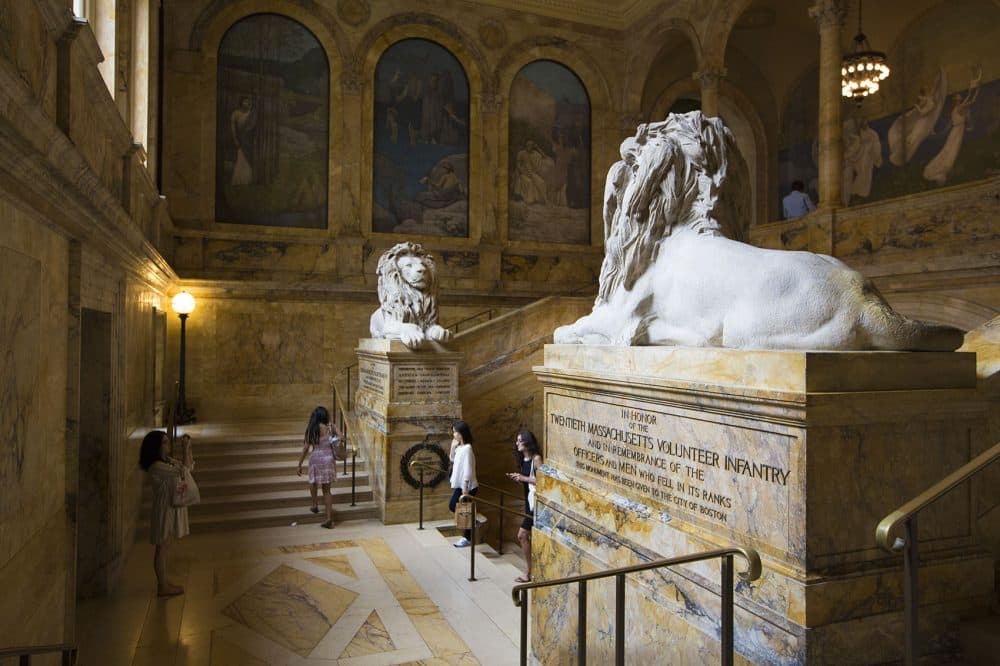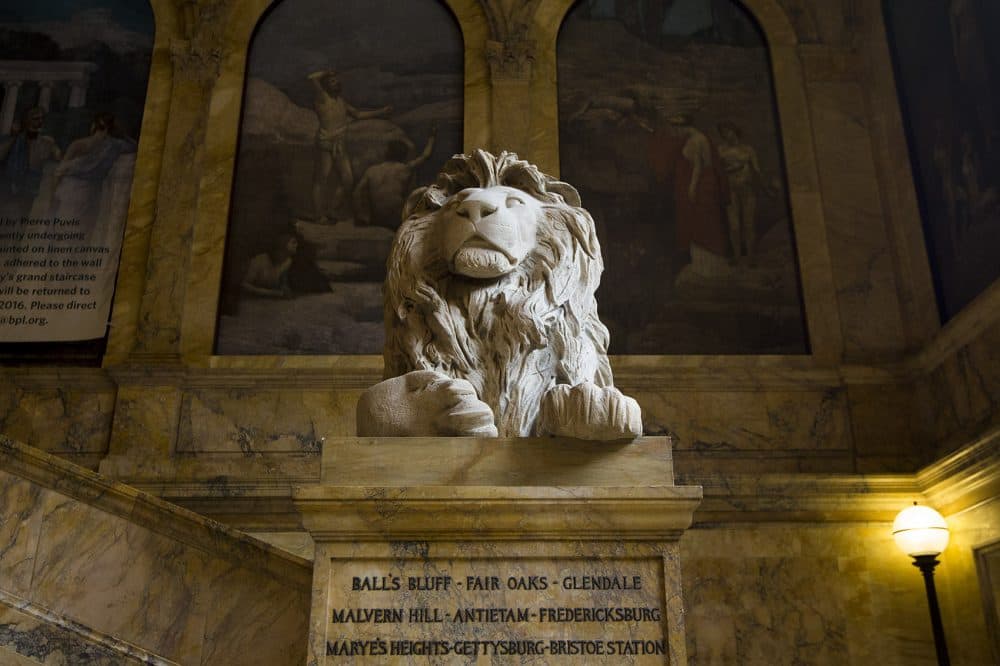Advertisement
The History Behind The Lion Sculptures At The Boston Public Library

This week, we've been talking about public art in Greater Boston, based on Greg Cook's list of the best 50 works. Here's the history behind No. 36 on Greg's list.
In a field in Phillipston, as gunfire crackles, the 20th Massachusetts re-enactors recreate a Civil War battle.
Mark McBride portrays a captain in the regiment. His canteen bears the seal of Harvard University.
"20th Massachusetts, known as the Harvard regiment," McBride says. "A lot of the officers and some of the enlisted men were either graduates or had been going to Harvard College at the time of the Civil War.
"It's a little bit different than a lot of regiments in Massachusetts, because a lot of regiments come from just a particular area, where the 20th Mass. pretty much covered the whole state. They were very well connected with the Boston Brahmin part of society."
The very expression "Boston Brahmin" was coined by physician and writer Oliver Wendell Holmes Sr. His son, the future Supreme Court justice, Oliver Wendell Holmes Jr., served in the 20th Massachusetts.
If the officers were largely from Boston society, that was not the case with the men.
Richard Miller first became interested in the 20th Massachusetts decades ago, when he took an exam in Harvard's Memorial Hall -- at the time lined with portraits of the regiment's officers. The official histories of the Confederate and Union armies fill the office in his home. Miller wrote "Harvard's Civil War," a history of the 20th Massachusetts Volunteer Infantry.
"The urban recruits could be very ethnic, which in the parlance of that day meant largely recent immigrants from Ireland, or first- or second-generation Irish-American," Miller said. "Rural recruits might come from Nantucket Island or Martha's Vineyard."
Advertisement

Those recruits from Nantucket and Martha's Vineyard and their Irish-American comrades from the cities are celebrated along with the Harvard officers by the lions guarding the grand staircase at the Boston Public Library.
It's No. 36 on the provocative list of the 50 best public works of art in Greater Boston, assembled by The ARTery's Greg Cook.
The lions were commissioned by veterans of the 20th Massachusetts and the 2nd Massachusetts regiments.
Greg meets me as the summer afternoon light bathes the creamy marble that surrounds the staircase, and out of which the lions are sculpted.
"The lions are an icon for the library," Greg tells me. "I mean, there's many major people here, but they sort of stand out as an icon for the institution."
The lions lie regally as patrons and tourists pass between them, their massive paws curling across the edge of the bases, filled with the names of the battles fought by the 2nd and the 20th Massachusetts: Ball's Bluff, Antietam, Gettysburg.

The library's expert on the lions is Meg Weeks, the library's exhibitions and outreach associate.
"Charles Follen McKim created the staircase we see around us," Weeks says. "He was so meticulous in his selection of color and tone when selecting the yellow Siena marble for the staircase, he quarried what they estimated to be 10 times the amount of stone needed to build the staircase because he was so particular about the tones, and wanted to have the opportunity to select just the right amount of veining, just the right amount of color, and it's remarkable because these lions were left unpolished."
In 1891, the sculptor, Louis Saint-Gaudens, delivered the lions unpolished. Library architect McKim thought they should be polished.
"And yet, when the members of the 2nd and 20th Massachusetts volunteer infantries came in and saw these, they were delighted," Weeks says. "They thought they were just ... ideal in the sense that they were unpolished and they caught the light and the contours of the sculpture in a very particular way that they might not otherwise if their tone was brought down to that of the yellow Siena marble."
In the end, the veterans proved to have better taste than the architect.
The lions, it turns out, are part of a collection of monuments to that time. David Lambert, the chief genealogist of the New England Historic Genealogical Society, says most of the other monuments are just more humble.
"Not every regiment has a beautiful statue at the Boston Public Library that you can see in the grand staircase there in the old building," Lambert says, "but if you go through a cemetery and you see these little white marble markers, those are instituted for Civil War veterans, and each one of them is slowly fading away. Sometimes the inscriptions are just barely there, but each one of them has a story."
And so the lions you pass on your way to do research at the library are really just two of the most majestic symbols of a much broader effort Massachusetts made two centuries ago to tell the stories of the young men who fought in America's bloodiest war.

This segment aired on September 2, 2016.
